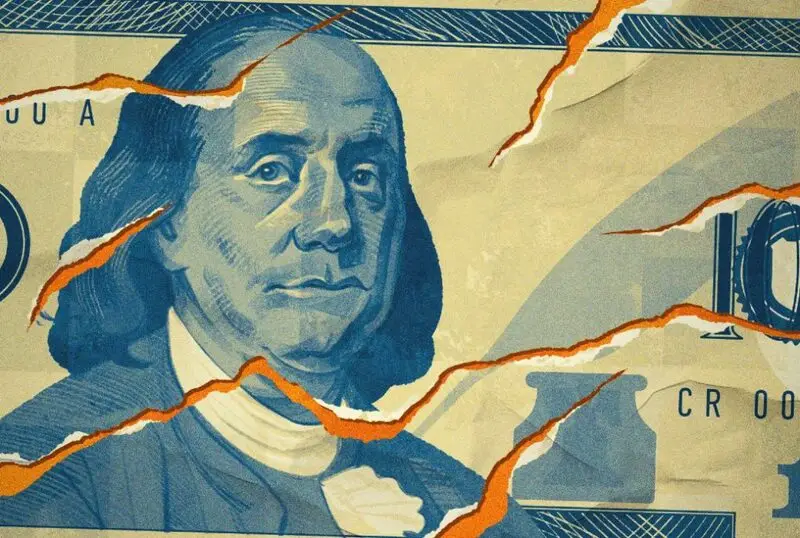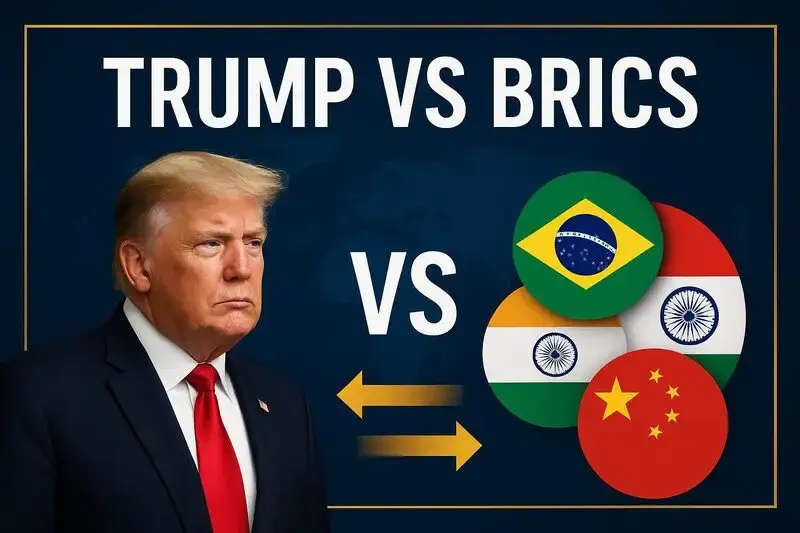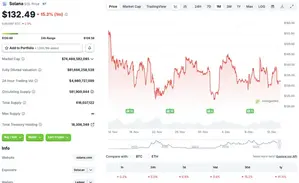US President Donald Trump has issued serious warnings about nations joining the BRICS economic bloc, and he’s threatening to impose tariffs on countries that pursue this path. During a bilateral lunch with Argentine President Javier Milei at the White House, Trump declared that “BRICS was an attack on the dollar” and made it clear he views the alliance’s efforts to move away from dollar-based trade as a direct threat.
Right now, over 50 nations are actually seeking membership in BRICS despite these warnings, and the movement toward creating alternatives to dollar dominance keeps gaining support. The list of which countries want to join BRICS reveals growing frustration with Western financial institutions, even as Trump’s tariff threats create real economic pressure on potential members.
Also Read: 50+ Countries Want to Join BRICS: US Global Power Faces Collapse
Understanding BRICS Dollar Attack & Trump’s Tariff Response

Trump’s Aggressive Stance on Dollar Protection
Trump’s statements during the White House meeting were direct and also quite forceful about protecting the dollar’s position. The president stated:
“I’m very strong on the dollar, and anybody that wants to deal in dollars, they have an advantage over people that aren’t. I told anybody that wants to be in BRICS, that’s fine, but we’re going to put tariffs on your nation… Everybody dropped out. They’re all dropping out of BRICS.”
He also added:
“BRICS was an attack on the dollar and I said, you want to play that game, I’m going to put tariffs on all of your products coming into the US. They said, like I said, we’re dropping out of BRICS…They don’t even talk about it anymore.”
Officials of member countries refuted such assertions of countries falling behind, however. India External Affairs Minister S Jaishankar objected to the description that BRICS is an anti-dollar movement, saying:
“Regarding the role of the dollar, we are realistic. We have no issue with the dollar, and our relations with the US are at their best. We have no interest in undermining the dollar.”
The Reality Behind BRICS Expansion
The alliance has been expanded from its original five founding members—Brazil, Russia, India, China, and South Africa—to eleven full members at the time of writing. Saudi Arabia completed its membership in July 2025, joining Egypt, Ethiopia, Iran, UAE, and Indonesia among the newer additions.
Which countries want to join BRICS includes 50+ nations that have submitted official applications right now. Top candidates include Bahrain, Malaysia, Turkey, Vietnam, and Mexico, along with Belarus, Sri Lanka, Kuwait, Thailand, and Uzbekistan. These nations are attracted to the New Development Bank’s financing options and the possibility of conducting trade without relying on dollars.
Trump’s assertion that “BRICS is dead” doesn’t really match what’s happening on the ground. The threatened tariffs create real concerns for potential members, but the appeal of reduced dollar dependency continues driving interest in the bloc.
Also Read: Country With $4 Trillion GDP Is Against BRICS Currency
BRICS Dollar-Free World: Economic Pressures and Future Implications
The New Development Bank had issued more than $32 billion in ninety six projects since 2016 and has also been providing infrastructure financing by lending in local currency. The strategy exposes the company to less exposure to dollar-related variations and offers better terms compared to those that usually apply to the Western-dominated institutions.
BRICS today governs more than 25 percent of the global GDP and it is almost half the population of the world. These figures render the Trump warnings meaningful on both fronts, the US is aware that the US dollar is facing a very real threat and potential member countries have to balance economic gains versus potential punishment by Washington.
The tariff threats put the countries in a dilemma of either being a member state of the BRICS or retaining full access to the US markets. Certain internal rifts have also cropped up in BRICS as well with China and Russia advocating a more aggressive growth process whereas Brazil and India would rather be more cautious on the type of candidates to be absorbed.
New members are still entering the alliance despite Trump increasing his threats, which has stalled into a standoff between the US economic pressure and other countries who are looking to change the current system.






